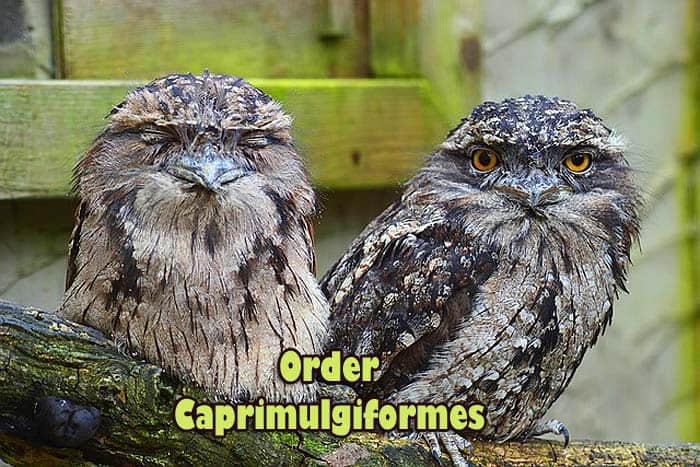
The classification of the various birds in this order Caprimulgiformes has been controversial and complicated over the years, especially for the nightjars.
Table of Contents
According to the ITIS database, the Caprimulgiformes order has two direct families, but nightjars family (Caprimulgidae) is the largest one. The bird order Caprimulgiformes contains nightjars, frogmouths, and oilbirds. These birds are distributed all over the world except Antarctica.
The two families of this order are Podargidae (Frogmouths) and Caprimulgidae (nightjars). There are about 114 Caprimulgiformes species in this bird order.
Caprimulgiformes Pronounciation
Caprimulgiformes Characteristics
All of the birds in the order share several features:
- As the name suggests, nightjars and their relatives are usually active at twilight or night.
- Caprimugiformes have large heads with large eyes.
- The bills of these birds can open very wide-this feature is called wide gape.
- The birds in the order are mainly nocturnal, so they have a simple coloring. The feathers are usually black, brown, grey, and sometimes brownish-yellow or red.
- Some species may also have patterns on their bodies.
- Most of the birds in the order are relatively small, from 6 to 16 inches, and are also of low weight.
- The wings and tails of Caprimulgiformes birds are long.
- Another prominent feature of this order is the presence of a serrated claw on the middle toe. The serration often resembles the teeth of a comb.
- These birds mainly feed on insects; some catch them in the air, while others find them in the ground.
- The nesting habits vary from species to species. While some birds do not make any nest whatsoever, others build a nest on trees on a nest in caves.
- Both parents feed the chicks that develop for approximately 20 days.
- These birds are known for their well-developed voices; their sounds can often be heard at night and are sometimes subject to legend.
- The birds of this order can be found around the world, except in some islands and Antarctica.
Caprimulgiformes Aves / Species
Here are some typical representatives of this order:
- Oilbird, Steatornis caripensis
- Wallace’s owlet-nightjar, Aegotheles wallacii
- Mountain owlet-nightjar, Aegotheles albertisi
- Tawny frogmouth, Podargus strigoides
- Gould’s frogmouth, Batrachostomus stellatus
- Solomon’s frogmouth, Rigidipenna inexpectata
- Rufus potoo, Nyctibius bracteatus
- Andean Potoo, Nyctibius maculosus
- Common nightjar, Caprimulgus europaeus
- Pennant-winged nightjar, Semeiophorus vexillarius
- Great-eared nightjar, Lyncornis macrotis
- Puerto Rican nightjar, Antrostomus noctitherus
Cite This Page
APA7MLA8Chicago
BioExplorer.net. (2024, April 26). Order Caprimulgiformes / Nightjars, Frogmouths, & Oilbirds. Bio Explorer. https://www.bioexplorer.net/order-caprimulgiformes/.
BioExplorer.net. "Order Caprimulgiformes / Nightjars, Frogmouths, & Oilbirds" Bio Explorer, 26 April 2024, https://www.bioexplorer.net/order-caprimulgiformes/.
BioExplorer.net. "Order Caprimulgiformes / Nightjars, Frogmouths, & Oilbirds" Bio Explorer, April 26 2024. https://www.bioexplorer.net/order-caprimulgiformes/.



























